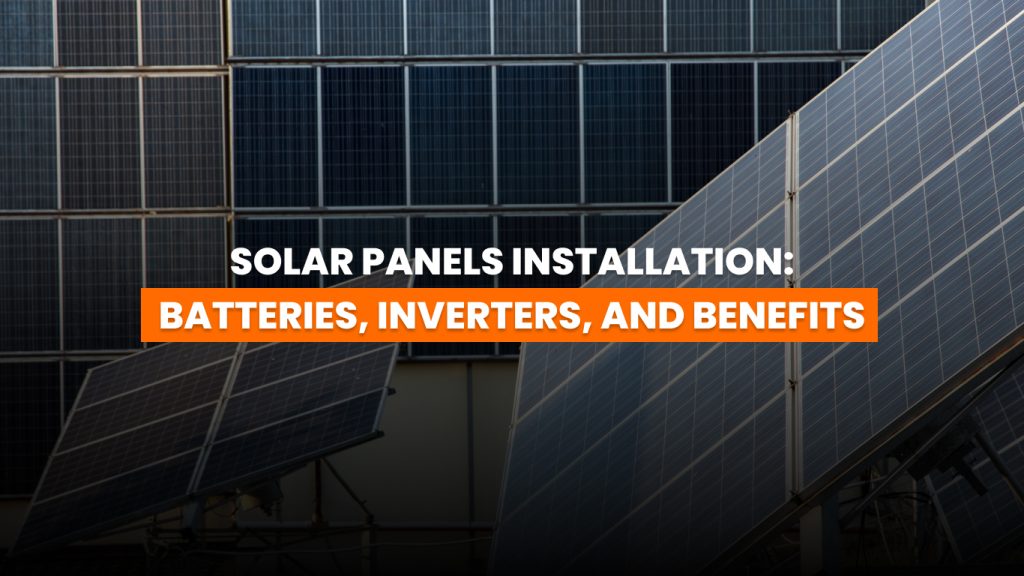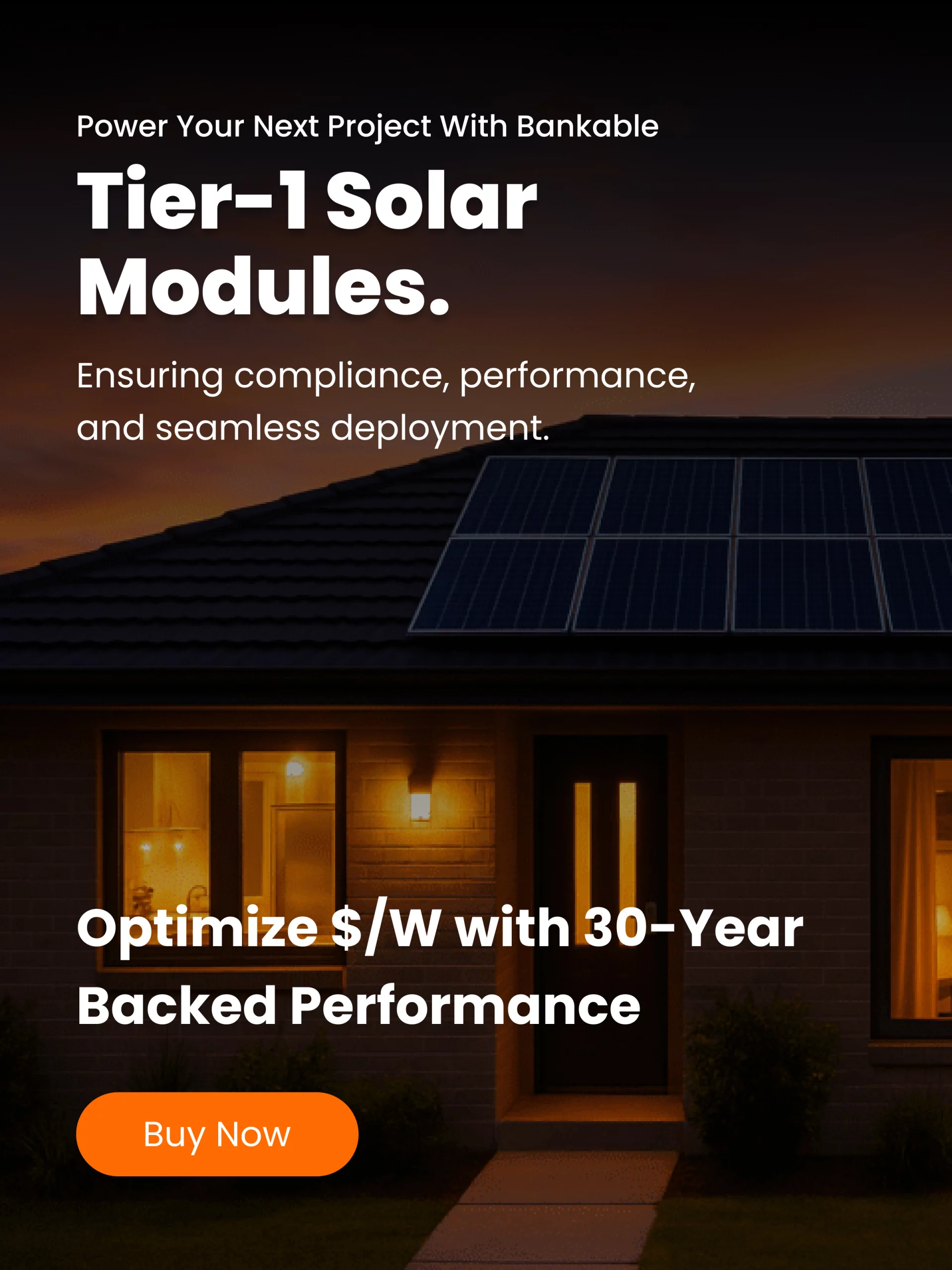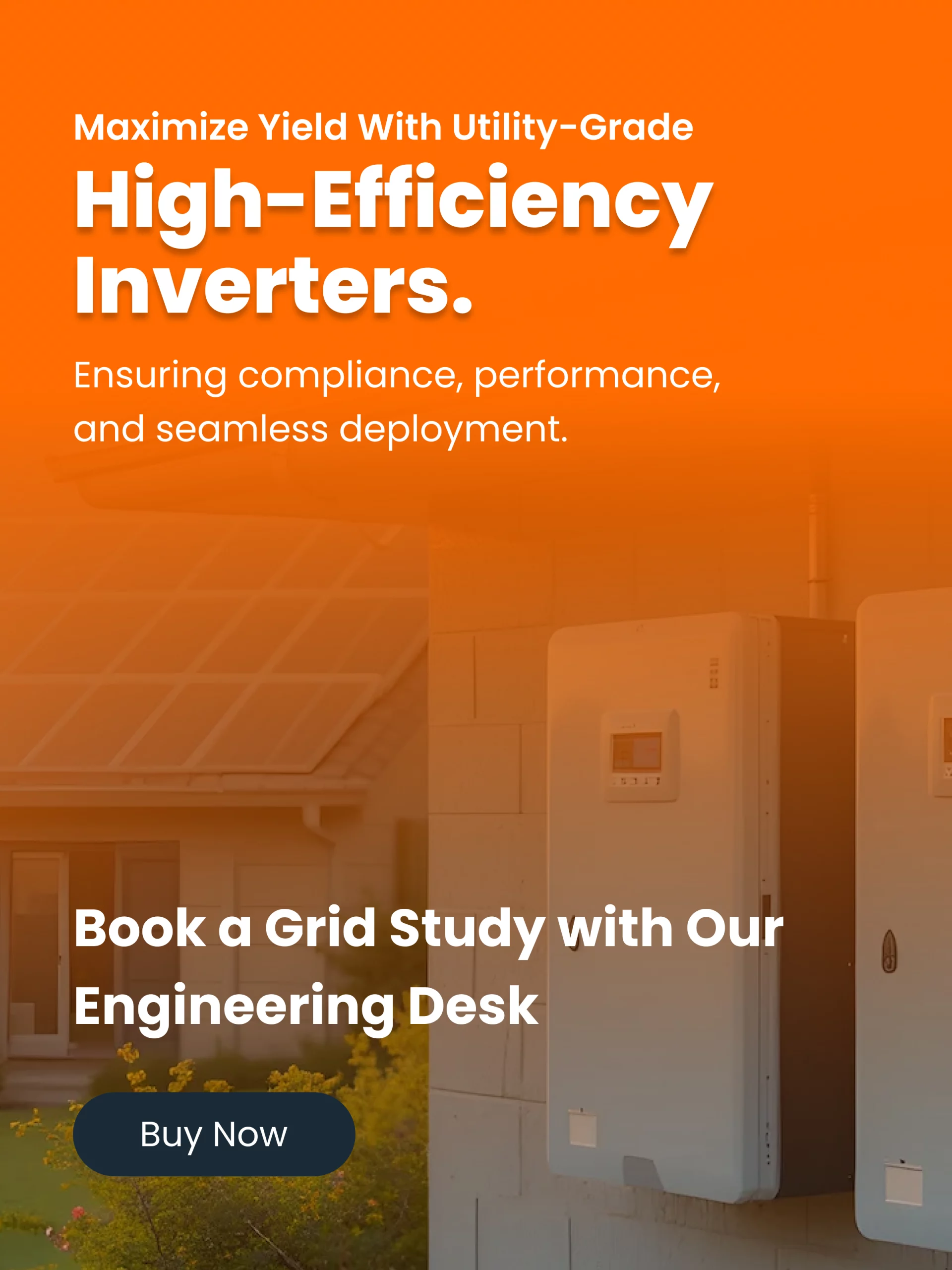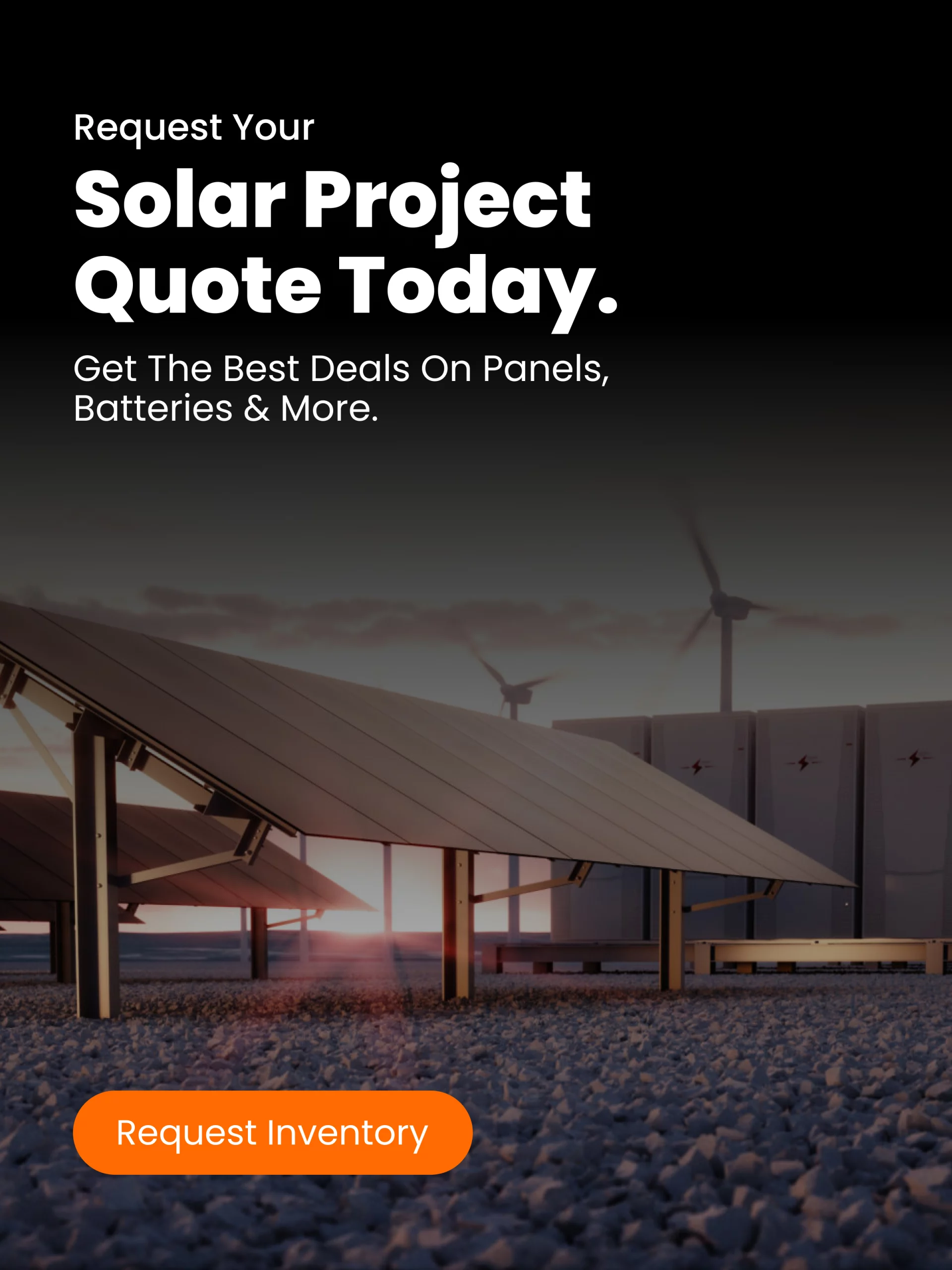Solar panels mounted on a metal frame showing mounting bolts and hardware for installation. Solar panels are the heart of any solar energy system, converting sunlight into electricity through photovoltaic (PV) cells. High-quality panels are vital for long-term performance – different panel types (monocrystalline, polycrystalline, or thin-film) vary in efficiency and cost. Investing in efficient solar panels from reputable manufacturers ensures higher energy output and reliability. Once installed, panels generate direct current (DC) power, which must be converted to alternating current (AC) by an inverter so your home can use the electricity. In addition, a battery can store excess energy for use at night or during outages, enhancing reliability. Systems that include batteries (for “off-grid” setups or backup) use them to supply power when solar output is low.
Sunhub’s online marketplace makes it easy to source all these components – panels, inverters, batteries, racking and more – in one place. As their site describes, installers and homeowners can “buy and sell solar panels, inverters, batteries… on Sunhub, the Solar E‑Commerce Marketplace”. This means clients can find everything from solar panels to complete battery backup systems at competitive prices, helping streamline project procurement.
Benefits of Solar Installation
Installing solar panels brings multiple benefits. It reduces or even eliminates electric bills by generating your own power, and excess generation can often be sold back to the grid via net metering. For example, SunPower notes that systems optimized for net metering can “save homeowners hundreds of dollars on electric bills each year”. In many regions the federal Investment Tax Credit (ITC) pays 30% of the system cost for installations before the deadline. According to industry guides, the full 30% solar tax credit can make a system far more affordable. Combined with local incentives (state rebates, utility credits, etc.), the cost of going solar can drop significantly.
Over time, the savings on utility bills typically outweigh the initial investment. Many U.S. homeowners fully pay off their systems within 7–8 years, after which the electricity they generate is essentially free. Modern solar panels also come with long warranties (often 25 years) and reliable performance, so owners can expect decades of production. The overall return on investment depends on factors like system size, local sunlight, and electricity rates, but solar remains one of the fastest-growing energy sources in the world. In short, installing panels can boost home value and lock in energy costs at low rates for years.
System Components and Design
A complete solar installation includes more than just panels. Mounting hardware secures panels to roofs or ground racks; charge controllers manage battery charging; disconnects and fuses provide safety; and monitoring equipment tracks performance. Choosing compatible, quality components is critical. Industry experts advise partnering with installers who use top-tier equipment: “The panels, inverters, and other equipment… have a huge impact on performance. You want to be sure you’re partnering with a solar company that installs equipment that performs well, lasts long, and delivers real value”.
During planning, a professional installer will assess your roof (or ground space) and system needs. This often involves site surveys and solar-design software. For instance, a good installer will evaluate roof pitch, orientation, shading, and wiring to custom-design the optimal array. In practice, the installer’s representative might map your roof and use modeling tools to preview panel placement and energy output. A careful design ensures maximum energy production and can inform homeowners about their expected savings and payback.
Installation Process
Once the design is set, the installation team takes over. Most residential installations take only a couple of days. A crew delivers the panels, inverters, mounting racks, and cables, and mounts everything on the roof or racking. They then wire the system (panels to inverter, inverter to your home panel) and set up any battery storage components. After installation, a utility inspection is required; once approved, the system is “turned on” and starts generating power.
A reputable installer also handles permits and grid-connection paperwork. Many solar companies pride themselves on a full-service approach – your local Sunhub installer can even take care of permits, HOA approvals, and applications for tax credits. By working with certified experts, you ensure compliance with local codes and standards. As one solar company guide puts it, choosing a qualified solar installer is crucial because they have the “experience in solar panel installations” and product warranties that protect your investment.
Choosing Solar Installers and Services
If you’re considering solar, look for experienced installers with strong reputations. Verify reviews and references from past customers; many experts recommend checking sites like SolarReviews or asking friends and neighbors. A reliable installer will have long-term viability (so warranties are honored) and industry certifications (indicating trained staff). Also inquire about financing options: many installers offer loans, leases, or power purchase agreements to lower upfront costs.
Sunhub’s network helps installers find top products and stay competitive, which indirectly benefits customers. By sourcing panels, inverters, batteries, and other parts through Sunhub, installers can offer better prices and more equipment choices. In effect, Sunhub supports installers to “get the job done” by providing a one-stop supply catalog. So when you shop for a solar company, consider whether they leverage platforms like Sunhub for quality equipment and fast delivery.
Costs and Value
The cost of a solar installation varies by system size, equipment quality, and local factors. Key cost drivers include the kilowatts of panels, panel brand and efficiency, and inverter choice (string inverter vs microinverters, for example). A guide to solar kits notes that higher-efficiency panels or premium brands typically cost more but yield greater long-term savings. Inverters and batteries also add to cost; home battery systems (like Tesla Powerwall) can double the project cost but provide resilience during outages.
To evaluate your investment, consider these points:
- System size: larger systems produce more power but cost more upfront.
- Equipment grade: premium panels/inverters cost more but may last longer.
- Incentives: federal and state credits can cut net cost by 30–50%.
- Electric rates: the higher your current rates, the quicker you save by switching to solar.
Remember that every solar project is custom. An installer will often provide a detailed quote showing equipment specs, warranty terms, and estimated annual production. While panel equipment might be only about 10–15% of total system cost, it determines output. Getting multiple bids and comparing equipment sets can help ensure you get fair pricing.
Overall, a professionally installed solar panel system is a long-term investment that can pay dividends for decades. With Sunhub’s marketplace offering a broad choice of panels, batteries, inverters and more, homeowners have more options than ever to configure the right system. By pairing high-quality components with expert design and installation, a solar energy system not only cuts utility bills but also supports a sustainable energy future.




